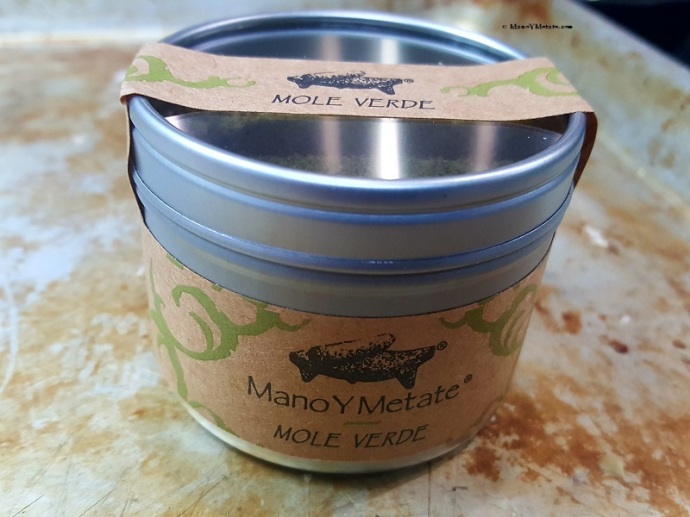Aroused by so much truly disgusting smut in the news these days (not “fake smut” at all), I am motivated to expose another perspective here. Lets talk ‘smut of a different color’ to distinguish current human smut from sources of the word itself. “Sooty,” “smudged,” “covered with black flakes of soot” seems to be how the term’s usage began, and of course that came to mean “tainted” or “stained,” its figurative, moral usage of today.

Corn smut–better known as “Mexican Corn-Truffle”–on teosinte (the ancient precursor of domestic corn) growing in the NativeSeeds/SEARCH Store “landscape” (MABurgess photo)
Tia Marta here to tell you about –believe it or not–Good Smut! Smut the Food, CORN SMUT, an incredibly interesting, nutritious, even ceremonially-important food! However, spured on by the USDA, farmers, not in the know about corn smut’s food history and value, have tried to eradicate it from US corn fields for years. Corn smut is a reaction to spore invasion by Ustilago maydis which gets into young kernels and causes reactive growth. Admittedly, corn smut does look unappealing, weird, even tainted or disgusting if you are looking for the perfect corn cob, hence the moves in modern agriculture to get rid of it. (Just search images of corn smut on the internet for an eye-full!)

Fungal growth of Ustilago maydis (corn smut) on commercial corn (internet source)
On the positive side, corn smut has had a very beneficial role in research on human breast cancers. Looks are not everything–This “ugly” growth has been a blessed gift to life-saving biomedical research. We might know very little about these cancers without DNA lab studies using corn smut fungus’ DNA. “Corn Soot,” as the fungus was termed by the people of Zuni, NewMexico, was also used traditionally as herbal medicine to hasten childbirth then to reduce bleeding after childbirth. [You can read lots more in a neat article by Kevin Dahl in Etnobiologia 7, in 2009, pp.94-99; or in Stevenson,M.L,1915, Ethnobotany of the Zuni, Ann.Rpt.Bur.Am.Ethnology 1908-1909, pp.31-102.]
Cuitlacoche (also spelled and pronounced huitlacoche) in the Aztec (Nahuatl) language, i.e corn smut food, has been used since time immemorial as a nutritious delicacy by Native People from MesoAmerica into what is now the Southwestern US. Nutritionally, cuitlacoche actually has more protein even than its host, corn. Corn by itself, however, does not contain a critically important amino acid building block in the human diet, lysine, which cuitlacoche provides. Corn smut would be a significant addition to a vegetarian diet.
Alas, because of its looks, corn smut has been almost completely relegated to oblivion in the USA. Not too many years ago I used to buy it canned, moist and ready to use, at Food City in Tucson, but recently I’ve asked for it at several Hispanic foods outlets like LaCarniceria on W.St.Mary’sRoad, El Super in South Tucson, and at every Food City. Nada–Young store attendants don’t even know the word! Obviously cuitlacoche is out of favor. Too bad, what popular market demand can do. We will have to grow our own smut from now on, or travel deeper into Mexico to find the right stuff….

Small bulbous “buds” of cuitlacoche (corn smut) harvested from teosinte for cooking (MABurgess photo)
Because….there are some super recipes for this delicacy! To create better press for corn smut as food, restaurants now market it as “Mexican Corn Truffle.” Some gourmet bistros have tried to create awareness of it, to no avail. When and if you find corn smut at a farmers’ market, or if you grow it yourself, you can find some great CUITLACOCHE recipe ideas online. Just Google “Cuitlacoche Recipes” for fabulous “new” takes on tacos, quesadillas, soups, meat sauces, enchiladas, tamales, stuffed chicken….

Normal non-infected teosinte “cob” maturing on the stalk. Note the green kernels aligned vertically at angles. (MABurgess photo)

Cuitlacoche (corn smut) on NSS teosinte cob (MABurgess photo)
Inspired by NativeSeeds/SEARCH Store Manager Chad Borseth (who sings the praises of corn smut), I like to make a smut stir-fry or sauce-base with onion, green chiles, garlic and corn “truffle buds” whole or sliced in olive oil. Using the same ingredients with butter and eggs in the frypan, I make a Cuitlacoche Omelette or Scramble. It’s an off-the-wall delicious surprise, simple, nutritious–IF you can find that critical ingredient!
Or, I saute diced corn smut with onions, mild green chiles, bison burger, and leftover potatoes, and slip it all in the oven for the flavors to meld. It makes a heart-warming Cuitlacoche Casserole perfect for a wintery supper.
Here’s a visual caution: When you cook cuitlacoche, the color sometimes will turn darker–like soot. Aahhhh, but the taste is a delicate delight: woodsy, earthy, richly mushroomy with a bouquet of fresh corn, hints of Hobbit food.

Teosinte corn smut diced for scrambling or adding to a cuitlacoche omelette (MABurgess photo)

Cuitlacoche Casserole made with ground bison burger, onion, potatoes, mild green chiles, and diced teosinte corn smut (MABurgess photo)
For more on Huitlacoche, check out the NativeSeedsSEARCH article in SeedHead News by Dr. Melissa Kruse-Peeples at http://www.nativeseeds.org/learn/nss-blog/293-huitlacoche.
Happy reading! Then order your favorite heirloom corn seed from the NSS 2018 Seedlisting, http://www.nativeseeds.org, or the Whole Seed Catalog and plan right now to PLANT them this next summer season in your own garden. If cuitlacoche buds out at the tip of your maturing cobs then rejoice– and enjoy its traditional flavor and sustenance!
This kind of smut is well worth experiencing – and don’t forget to spread their spores.

Beautiful cuitlacoche, corn smut at the top of an ear of corn












































































































